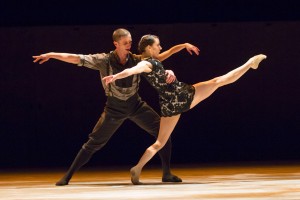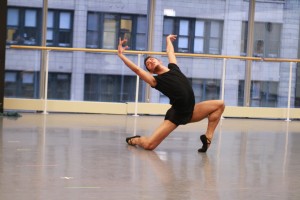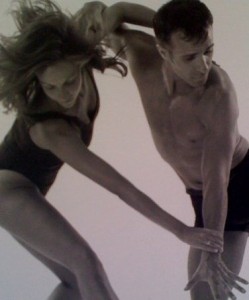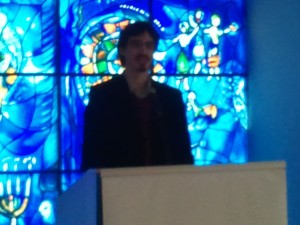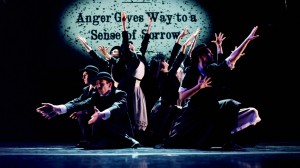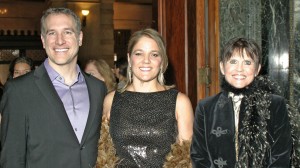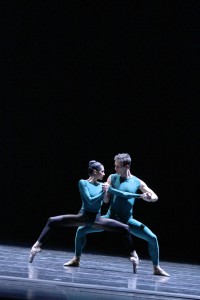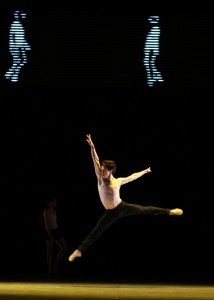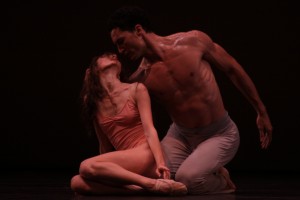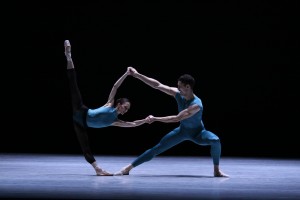This weekend, March 22-24, Ballet Hispanico (BH) under the direction of Eduardo Vilaro, Columbia College alumni, former Dance Center artist-in-residence and founder and former artistic director of Luna Negra Dance Theater, takes the stage at the Dance Center of Columbia College Chicago. Vilaro’s newest work Asuka, set to salsa music by the legendary Celia Cruz, will make its Chicago debut on the mixed repertory program. “It is thrilling to be back,” said Vilaro. “The Dance Center was home for me for almost four years…and has been a major dance force in the national community since its inception.” BH has been busy touring the past few weeks, so I corresponded with Vilaro and dancer Jamal Callender (graduate of The Julliard School and former member of Hubbard Street 2) via email. Callender told me the best thing about being back in New York after his season in Chicago with HS2 is getting to see his family and his many friends and Julliard peeps dancing on Broadway and on the movie screen. He’s enjoying his time at BH. “Mr. V is very forward-thinking and I like the relationship I have with him. I appreciate his advice and the way he looks out for me and all the artists,” said Callender, who is dancing in three of the four pieces. “The repertory catered to me so well. It’s beyond diverse. It’s eclectic, like me. I feel like an artist here!”
Vilaro, who began dancing with BH in 1985, talked about how the company has changed since he was a dancer there. “When I started dancing there, it was a modern dance company with some neo-classical ballets. Our founder, Tina Ramirez had a strong theatrical background, having had a career in Flamenco and Broadway. The repertory reflected that.” Now as artistic director, he wants to work with choreographers that explore Latino culture…so the work is more contemporary without losing sight of its heritage. As an example, his Asuka celebrates a Latin American music icon, but focuses on how her music impacted the Latin community rather than a narrative of her life. Alongside Vilaro’s piece is Andrea Miller’s Moor-influenced Naci and a duet about human struggle titled Locked Up Laura by Annabelle Lopez Ochoa.
Also on the program is a commission work from African American choreographer Ron Brown. Set to songs by Peruvian singer Susana Baca, Espiritu Vivo deals with personal loss and recovery. “His work is a direct connection to the African influence in the Latino world,” said Vilaro. “There is a deep connection that can be seen in the seamless harmony of his movement with the music. It can also be seen in the articulated hips and torso found in Latin social dances. Ron is a special human being and his gentle strength embraced by the dancers helped lead them to fully understand his work.” For Callender, dancing in Brown’s piece is a full-circle moment. “When I was younger, I remember watching Ron in the dance studio working with his company. I used to it by the door in awe and just admire everyone in the company.I remember going with my Mom every year to the Joyce to see them perform.”
Aside from touring, the company was recently asked to perform at the victory parade for the Super Bowl Champion New York Giants. After dancing for the crowd Vilaro and crew taught the fans a simple salsa step in honor of wide receiver Victor Cruz, who claims this as his touchdown dance. “I was thrilled that dance was represented alongside such a beloved American sport,” Vilaro said. “There is a large world out there that needs to have more dance in their loves and I hope we gained some new friends.” Callender added simply, “It was a blast.”
Ballet Hispanico, Thursday-Saturday, March 22-24 at 8 pm
Dance Center at Columbia College, 1306 S. Michigan Ave. Tickets are $26-$30. Call 312.369.8330 or visit colum.edu/dancecenter.
*There is a post-show discussion on Thursday, March 22 and a pre-show talk at 7 pm on Friday, March 23.


